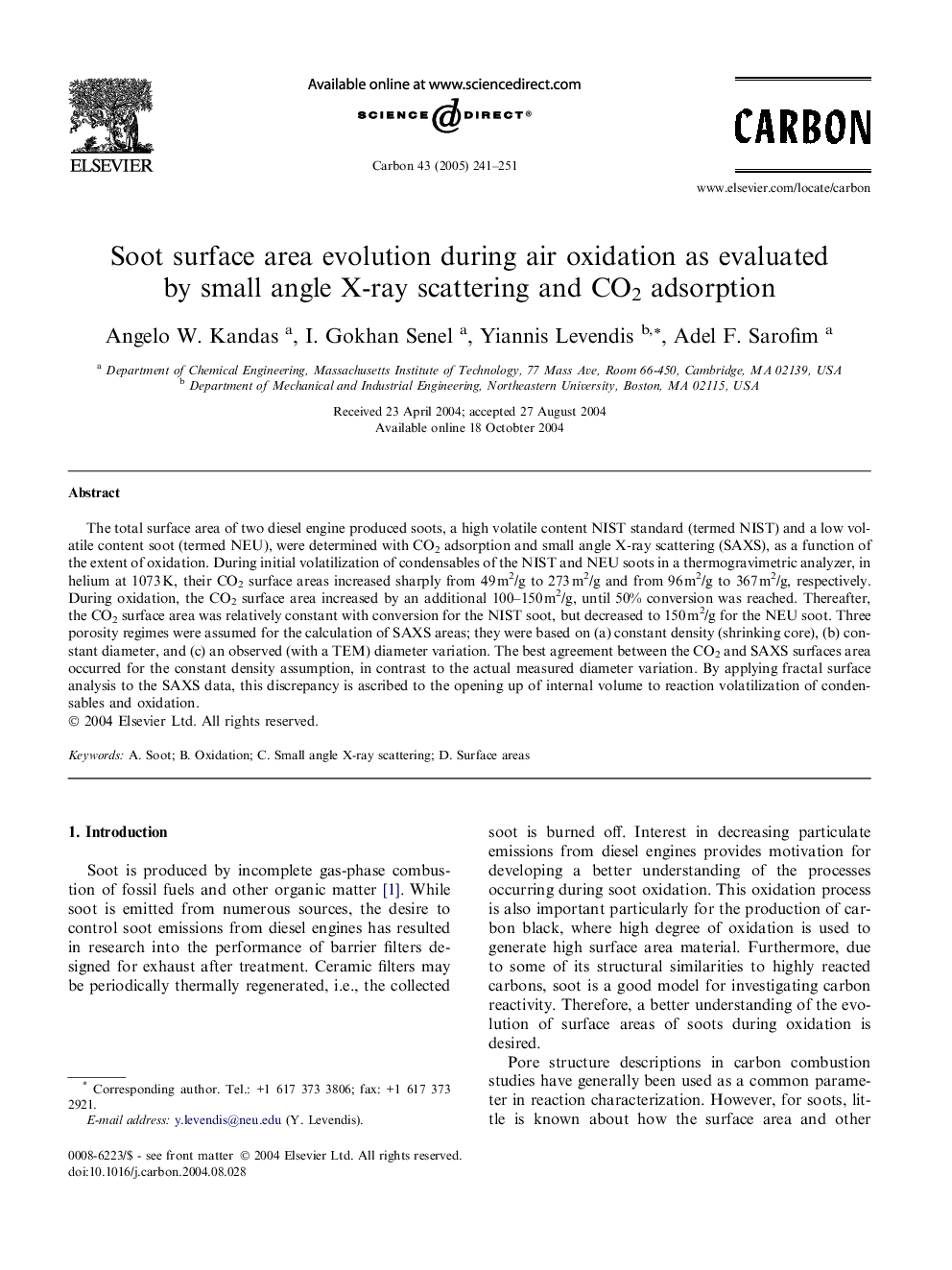| کد مقاله | کد نشریه | سال انتشار | مقاله انگلیسی | نسخه تمام متن |
|---|---|---|---|---|
| 10611355 | 986061 | 2005 | 11 صفحه PDF | دانلود رایگان |
عنوان انگلیسی مقاله ISI
Soot surface area evolution during air oxidation as evaluated by small angle X-ray scattering and CO2 adsorption
دانلود مقاله + سفارش ترجمه
دانلود مقاله ISI انگلیسی
رایگان برای ایرانیان
کلمات کلیدی
موضوعات مرتبط
مهندسی و علوم پایه
مهندسی انرژی
انرژی (عمومی)
پیش نمایش صفحه اول مقاله

چکیده انگلیسی
The total surface area of two diesel engine produced soots, a high volatile content NIST standard (termed NIST) and a low volatile content soot (termed NEU), were determined with CO2 adsorption and small angle X-ray scattering (SAXS), as a function of the extent of oxidation. During initial volatilization of condensables of the NIST and NEU soots in a thermogravimetric analyzer, in helium at 1073Â K, their CO2 surface areas increased sharply from 49Â m2/g to 273Â m2/g and from 96Â m2/g to 367Â m2/g, respectively. During oxidation, the CO2 surface area increased by an additional 100-150Â m2/g, until 50% conversion was reached. Thereafter, the CO2 surface area was relatively constant with conversion for the NIST soot, but decreased to 150Â m2/g for the NEU soot. Three porosity regimes were assumed for the calculation of SAXS areas; they were based on (a) constant density (shrinking core), (b) constant diameter, and (c) an observed (with a TEM) diameter variation. The best agreement between the CO2 and SAXS surfaces area occurred for the constant density assumption, in contrast to the actual measured diameter variation. By applying fractal surface analysis to the SAXS data, this discrepancy is ascribed to the opening up of internal volume to reaction volatilization of condensables and oxidation.
ناشر
Database: Elsevier - ScienceDirect (ساینس دایرکت)
Journal: Carbon - Volume 43, Issue 2, 2005, Pages 241-251
Journal: Carbon - Volume 43, Issue 2, 2005, Pages 241-251
نویسندگان
Angelo W. Kandas, I. Gokhan Senel, Yiannis Levendis, Adel F. Sarofim,